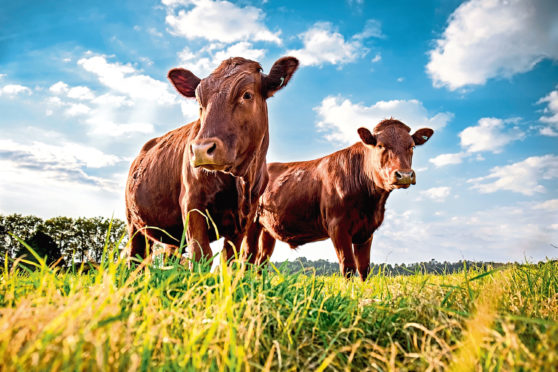Scottish researchers are embarking on a £250,000 project to help mitigate and monitor methane production from grazing cattle.
Scotland’s Rural College (SRUC) has teamed up with Strathclyde University in Glasgow to improve the technology available to monitor the methane produced by cattle being reared outside.
Scientists working on the Defra-funded GrASTech project will develop animal-mounted activity sensors and systems, for use on cattle outdoors, to monitor location, feeding behaviour and weight of animals.
At present methane emissions from livestock account for around 5% of the UK’s total greenhouse gas emissions, and politicians have aspirations for the country to become net-zero.
“Researchers in the UK are at the forefront of innovative solutions to tackle climate change and help us meet our world-leading target of net zero emissions by 2050,” said UK Farming Minister, George Eustice.
“We are proud to be sponsoring this work by Scotland’s Rural College, which will bring forward new technologies to support farmers across all four corners of the UK rise to the challenge.”
Professor Richard Dewhurst from SRUC said: “One of the key approaches for reducing methane emissions is to increase the health, fertility and longevity of animals.
“By adapting technologies used to monitor and manage these things for housed cattle, we expect to deliver similar benefits for grazing cattle.”
Professor Craig Michie from Strathclyde University said the project will involve the development of a battery-powered methane sensing unit for outdoor cattle, and innovative neck-mounted collars that identify key conditions of individual animals.
The project is due to run until September 2021.










